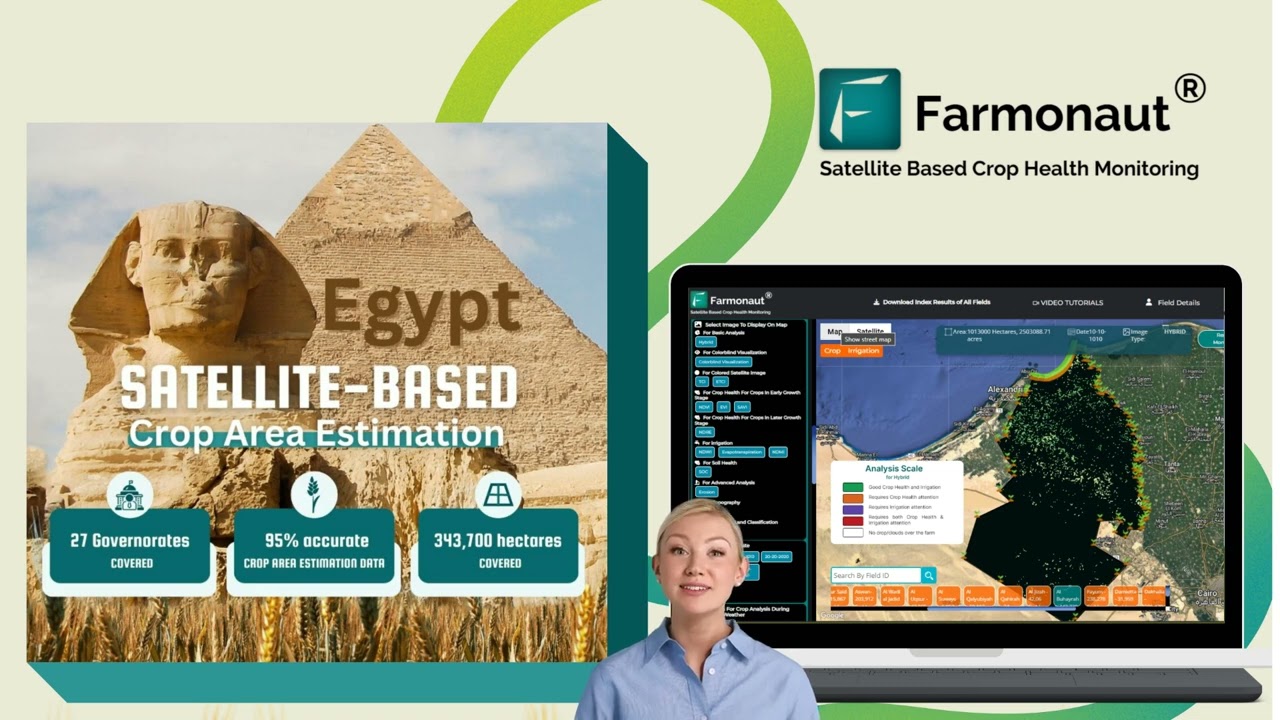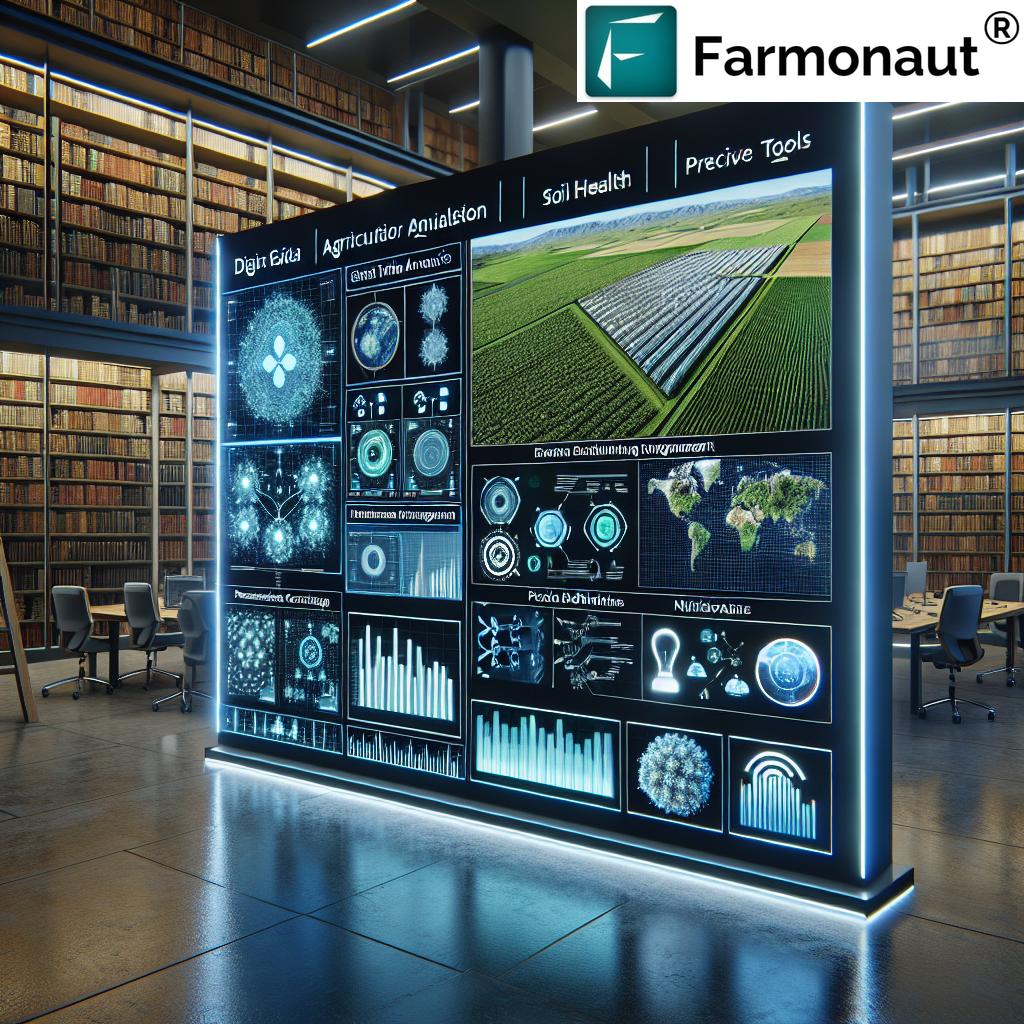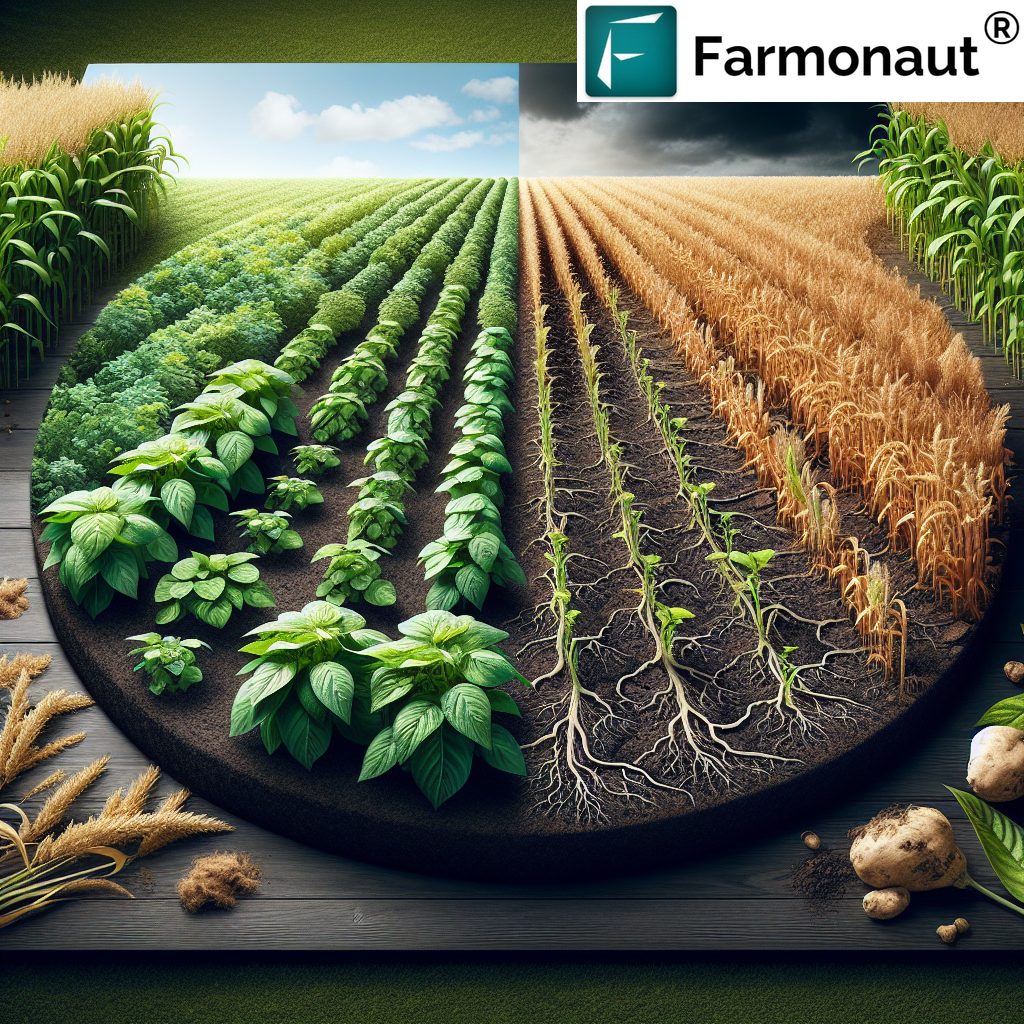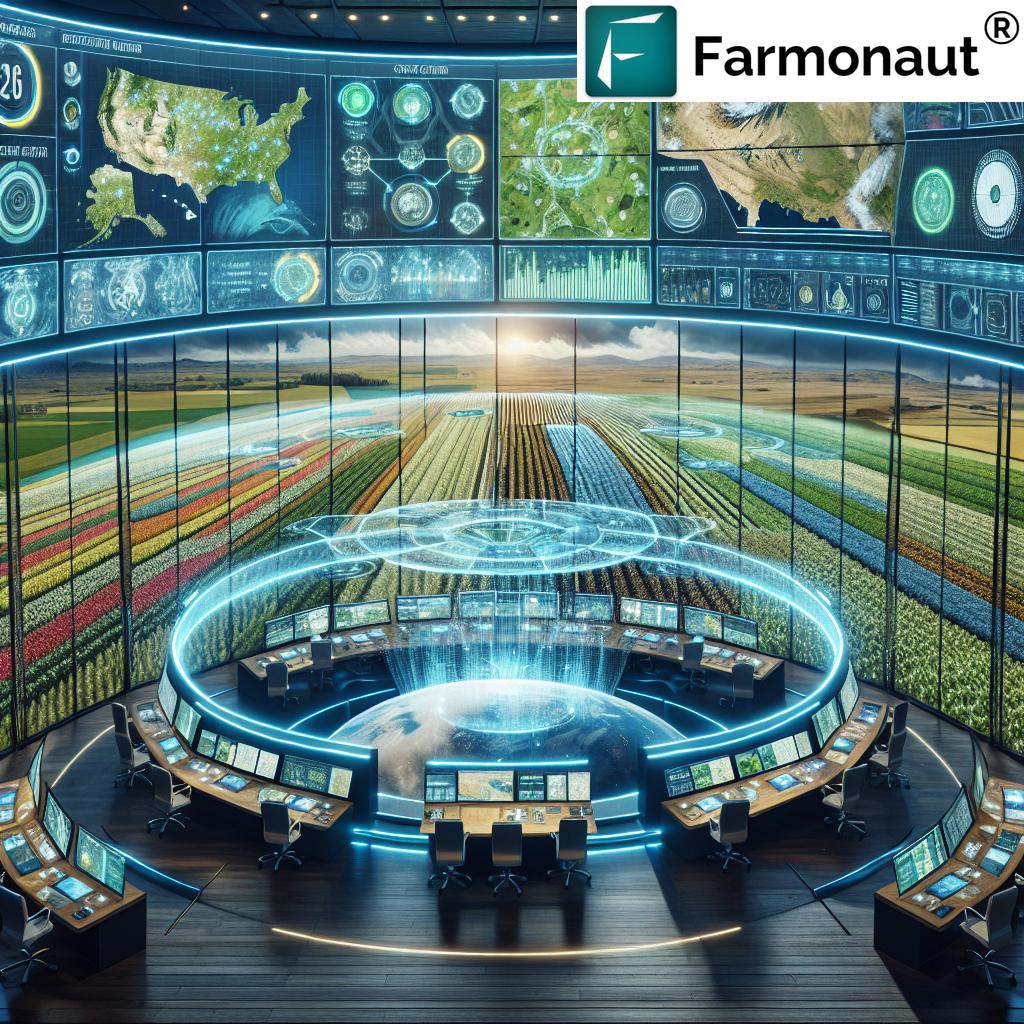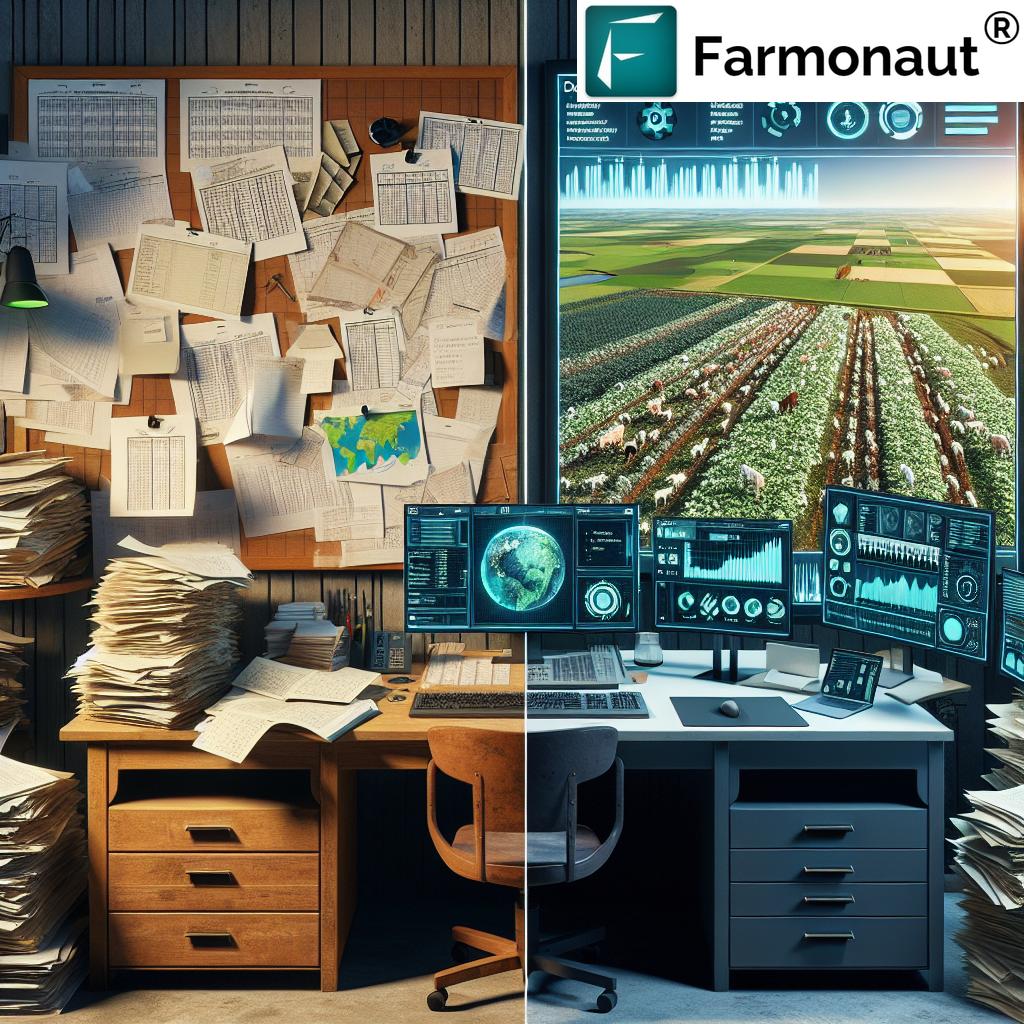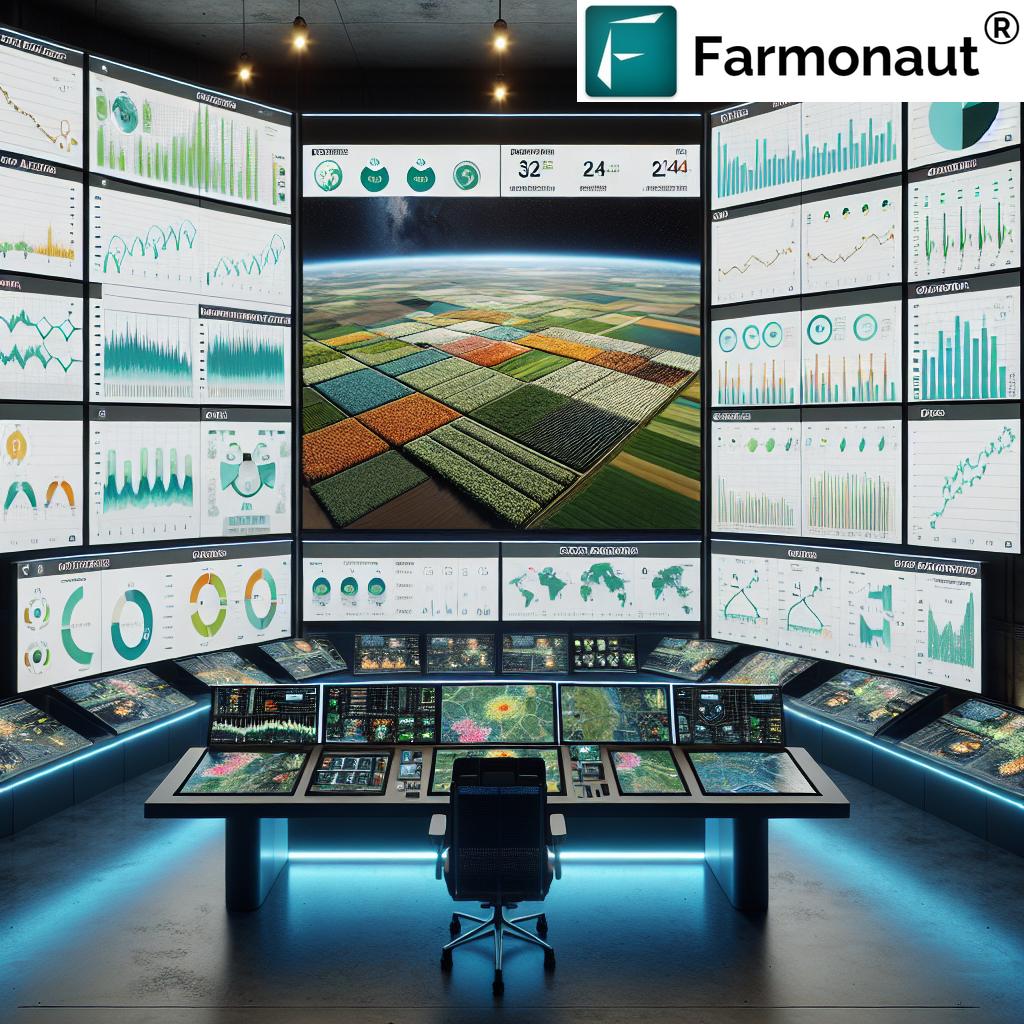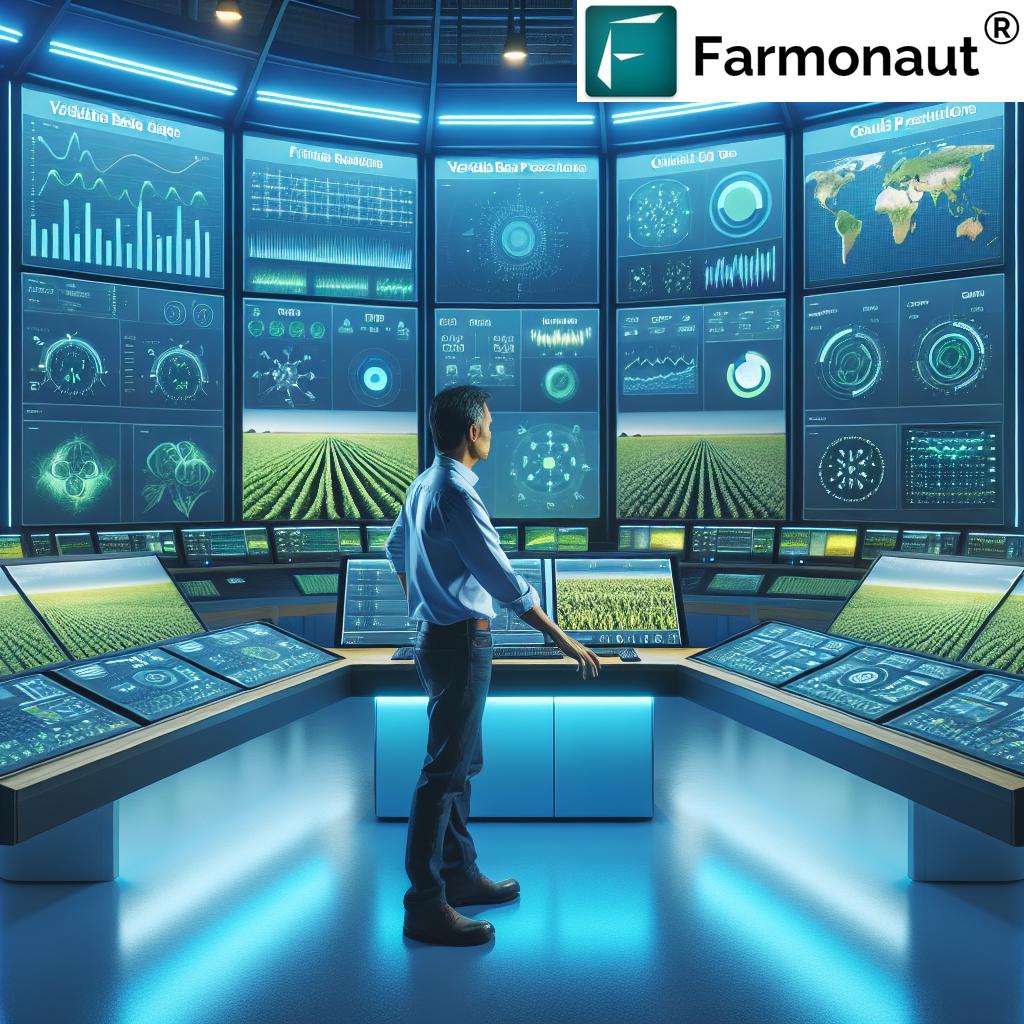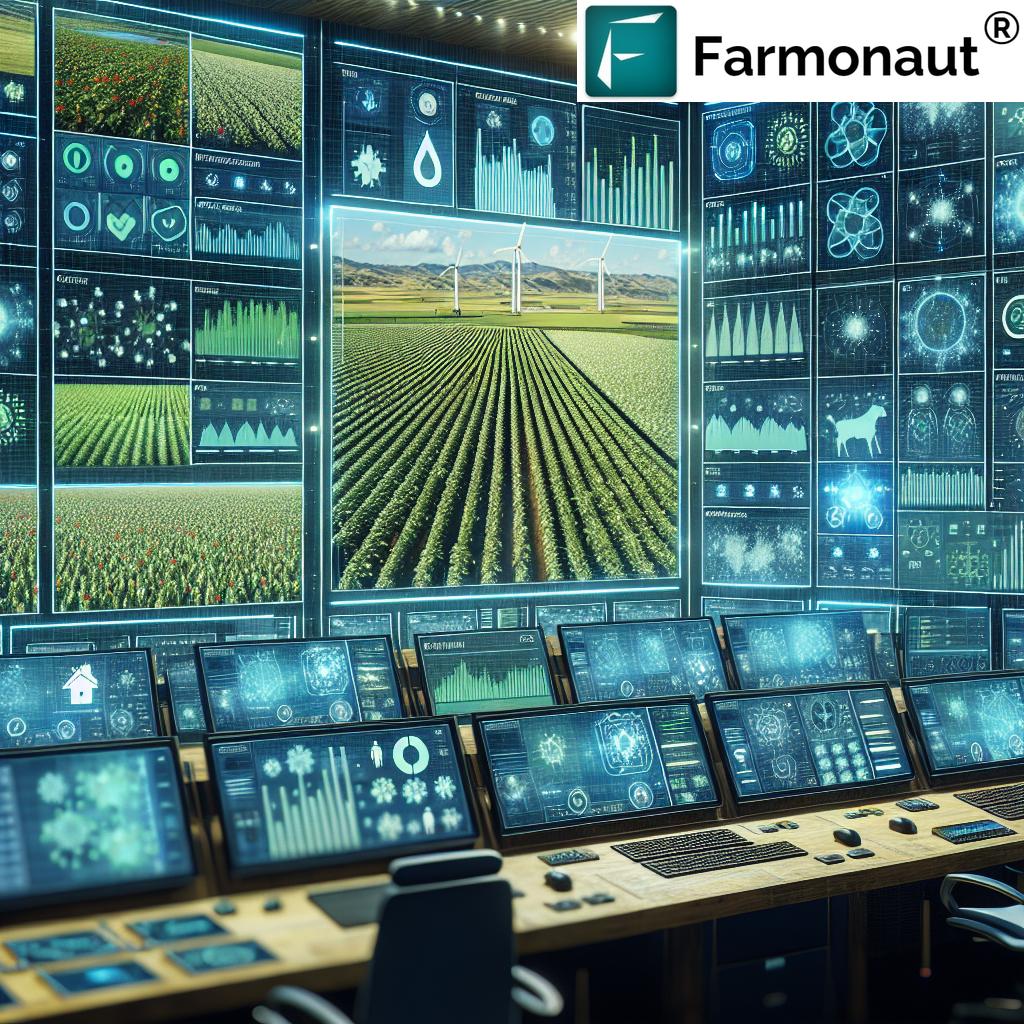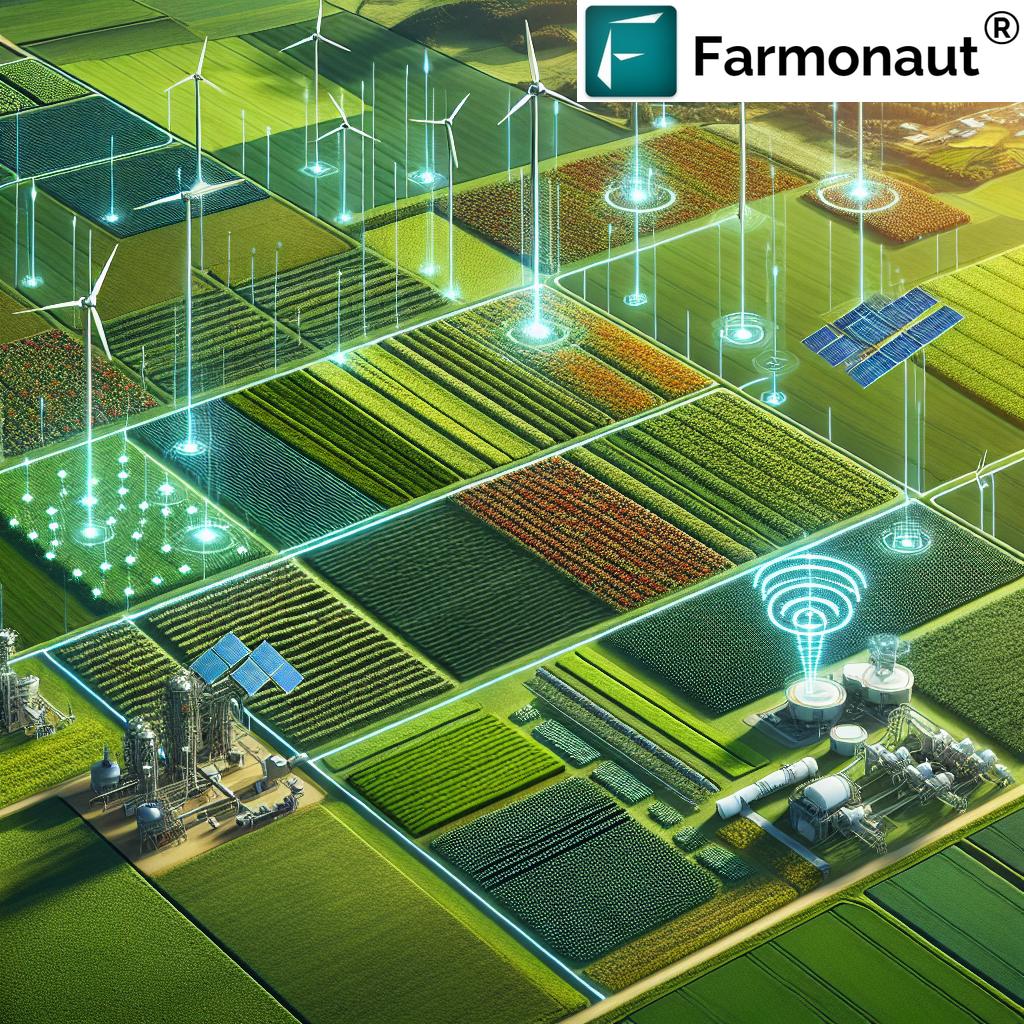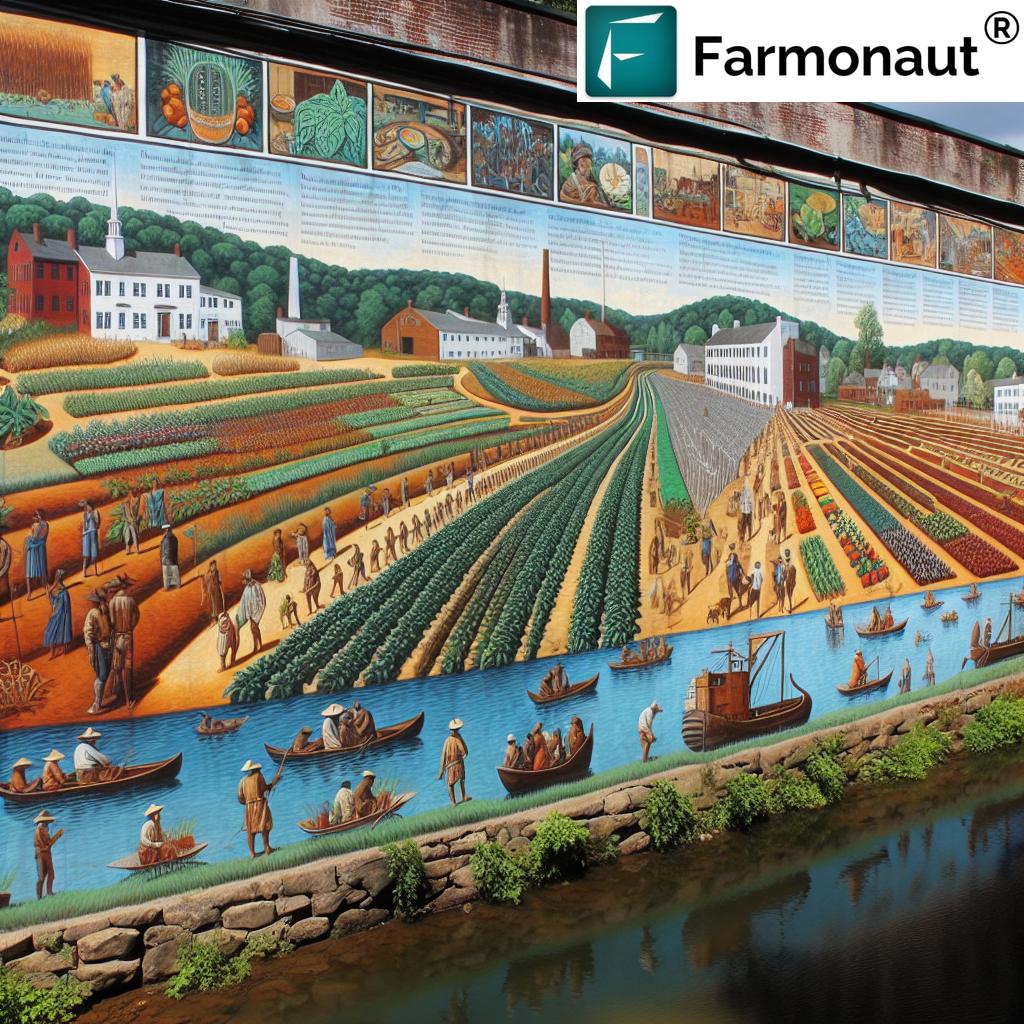Smart Agriculture Practices: 7 Shocking Farming Tech Trends
“AI-powered precision farming can increase crop yields by up to 30% compared to traditional methods.”
Meta Description:
Smart agriculture and precision farming integrate technologies like AI, IoT, and drones to optimize crop yields, boost efficiency, and drive sustainability in modern farming. Discover 7 shocking trends!
Table of Contents
- Introduction: The Smart Agriculture Revolution
- What Is Smart Agriculture and Precision Farming?
- Why Smart Agriculture Matters Today
- 7 Shocking Farming Tech Trends Reshaping Agriculture
- 1. IoT in Agriculture: Transforming Data Collection & Decisions
- 2. Artificial Intelligence & Machine Learning in Agriculture
- 3. Drones & Satellite Imagery for Crop Health Monitoring
- 4. Automation & Robotics: Redefining Farm Labor
- 5. Big Data in Farming: Predictive Analytics & Resource Management
- 6. Smart Irrigation Systems: Water Efficiency for Sustainable Yields
- 7. Blockchain-Based Traceability: Building Trust and Transparency
- Farmonaut’s Role: Leading the Smart Agriculture Revolution
- Comparative Table: Features & Impact of Smart Agriculture Technologies
- Core Benefits of Smart Agri-Tech for Farmers & Agribusinesses
- Challenges of Implementing Smart Farming Technologies
- The Future of Smart Agriculture: Trends & Outlook
- FAQ: Smart Agriculture, Precision Farming & Farmonaut Solutions
- Farmonaut: Affordable Subscription Plans
- Conclusion
Introduction: The Smart Agriculture Revolution
Welcome to an era where technology radically reshapes how we farm. From artificial intelligence (AI) and machine learning (ML) to IoT devices, drones, and more, smart agriculture is not just a buzzword—it’s a reality driving efficiency, sustainability, and profitability in fields across the globe.
As populations grow and climate change challenges mount, traditional farming practices are under scrutiny. In response, a wave of advanced agricultural technologies is emerging—empowering farmers to optimize every drop of water, nutrient, and hour of labor to produce more from less, minimize waste, and reduce environmental footprints.
In this comprehensive guide, we’ll explore seven shocking tech trends in smart agriculture that are totally transforming how we monitor, manage, and maximize crop yields.
What Is Smart Agriculture and Precision Farming?
Smart agriculture, often called precision farming, refers to the integration of advanced technologies—including IoT, AI, machine learning, drones, and automation—directly into agricultural practices. The result? Farmers can monitor data, gain insights, and control resources with unprecedented precision, optimizing every step of the farming process.
- Precision Agriculture: Focuses on using data and smart technologies to apply the right amounts of water, fertilizer, or pesticide only where needed.
- Smart Agriculture: Broader concept integrating IoT devices, AI-based analysis, and real-time monitoring to make informed decisions and optimize resource management.
The goal? Enhance yield, reduce waste, manage resources better, adapt to climate change, and guarantee sustainability for the long-term.
Why Smart Agriculture Matters Today
The need for innovation in farming has never been more urgent. Let’s break down the key reasons:
- Increasing food demand—global population is projected to reach 9.7 billion by 2050.
- Resource shortages: Scarce water, fertilizer, and rising labor costs.
- Climate change: Weather unpredictability, new pests, and disease cycles.
- Need for sustainability: Reducing waste and environmental impact while boosting productivity.
“Over 70% of smart agriculture solutions now use real-time data analytics for efficient farm management.”
7 Shocking Farming Tech Trends Reshaping Agriculture
Let’s dive deeper into the seven most game-changing technology trends set to define the future of both smallholder and large-scale farming operations.
1. IoT in Agriculture: Transforming Data Collection & Decisions
The Internet of Things (IoT) is at the heart of smart agriculture. IoT devices—from sensors and actuators to connected weather stations—are now deployed in fields globally.
- Soil sensors: Continuously measure moisture, temperature, and nutrients.
- Climate stations: Monitor humidity, rainfall, wind, and temperature.
- Actuators: Automate irrigation, nutrient dosing, and even pest control.
We, as farmers or agribusinesses, can now instantly collect and analyze data to make precise decisions on irrigation, fertilization, and more—saving time, reducing costs, and minimizing waste.
- Key Benefit: Optimizing water, fertilizer, and pesticide usage by applying the right amounts at the right time and place.
- Impact: Water savings of up to 50%, reduced waste, and improved resource allocation.
Harnessing IoT in agriculture paves the way for data-driven, sustainable food production.
2. Artificial Intelligence & Machine Learning in Agriculture
Advanced AI and ML algorithms are transforming how we approach decision-making on farms. These algorithms analyze vast data sets—from IoT sensors, historical records, and external sources such as weather forecasts and market trends.
- Disease & pest prediction: Recognize patterns to predict outbreaks before they occur.
- Optimized planting schedules: Suggest the best planting windows for each crop based on local data.
- Personalized treatment plans: Recommend fertilization and protection strategies tailored to each field’s real-time status.
The predictive capability of AI in agriculture allows us to proactively manage crops, immediately react to risks, and maximize both yields and profits. For instance, Farmonaut’s Jeevn AI Advisory System delivers AI-based guidance on crop health, weather forecasts, and more.
Key Benefit: Predict, prevent, and optimize—from planting to harvest. Mitigate risks and manage your farm like a data scientist!
3. Drones & Satellite Imagery for Crop Health Monitoring
Drones, equipped with high-resolution cameras and sensors, fly over fields, capturing real-time images and data. When combined with satellite imagery (such as that provided by Farmonaut), this technology enables deep analysis of crop health.
- NDVI (Normalized Difference Vegetation Index) and other vegetation indices highlight crop health and vigor.
- Spotting nutrient deficiencies, diseases, and pests early—before they spread.
- Guiding targeted interventions: Only treat affected areas, optimizing resources and minimizing losses.
This approach to drones for crop monitoring offers actionable insights for both small and large farms, boosting efficiency and sustainability.
Curious how satellite-powered crop health monitoring works? Discover Farmonaut’s real-time satellite & drone analysis service for crop monitoring and plantation management on the Large-Scale Farm Management App.
- Key Benefit: Uncover hidden issues, maximize crop yields, and minimize costly interventions with precision aerial data.
4. Automation & Robotics: Redefining Farm Labor
Robots and autonomous machinery are taking on repetitive, labor-intensive tasks—from planting, weeding, and spraying to harvesting and livestock management.
- Autonomous tractors and harvesters operate with little or no human intervention.
- Precision robotics can micro-dose fertilizer or herbicide, targeting only necessary areas.
- Reduction in labor shortages and costs.
By integrating automation in agriculture, we boost operational efficiency, eliminate errors, and achieve more consistent outcomes year after year. Learn more about fleet management and resource optimization solutions on Farmonaut’s Fleet Management page.
- Key Benefit: Increased productivity, significant labor savings, and higher profitability—all while addressing workforce shortages.
5. Big Data in Farming: Predictive Analytics & Resource Management
Massive volumes of agricultural data are now being collected, analyzed, and used for smarter decision-making—from soil sensors and satellite imagery to market trends and historical records.
- Big data analytics spot trends, anomalies, and correlations hidden to the human eye.
- Forecasting tools empower farmers to plan planting schedules, anticipate market prices, and optimize resources.
- Risk management: Minimize crop losses by preparing for climate events or pest outbreaks in advance.
This is data-driven agriculture at its finest! Explore how Farmonaut’s platform provides real-time, satellite-based analytics and AI-driven insights accessible on Android, iOS, and Web Apps.
Key Benefit: Mitigate risks, maximize yields, and stay ahead of market curves through advanced agricultural analytics.
Discover More: Farmonaut’s carbon footprinting feature enables agribusinesses to monitor the environmental impact of their operations and optimize sustainability strategies using big data analytics.
6. Smart Irrigation Systems: Water Efficiency for Sustainable Yields
Smart irrigation systems use IoT-enabled sensors to monitor soil moisture and weather data, automatically adjusting water delivery to crops.
- Automated, precise water control—reducing water usage by up to 50% or more.
- Real-time monitoring means crops never go under- or over-watered.
- Remote control: Farmers can adjust irrigation from their phone or computer, anytime, anywhere.
This not only saves water—crucial in drought-prone regions—but also improves crop health and prevents nutrient leaching, ensuring sustainability.
For advanced resource management solutions, check Farmonaut’s Crop Plantation and Forest Advisory Services for smart monitoring of soil moisture and irrigation.
- Key Benefit: Water and energy efficiency drives profit while supporting sustainable agriculture worldwide.
7. Blockchain-Based Traceability: Building Trust and Transparency
As global supply chains grow more complex, ensuring the authenticity and traceability of agricultural products is essential. Blockchain technology offers tamper-proof, transparent records for every step of produce from farm to market.
- Ensures food safety: Consumers trust products with transparent origins.
- Reduces fraud and economic losses by verifying claims through secure blockchain records.
- Streamlines crop verification for lenders and insurance companies, improving farmer access to financing.
Farmonaut offers a robust Blockchain-Based Product Traceability Solution. This is especially valuable for exporters, food companies, and even governments seeking end-to-end supply chain transparency.
- Key Benefit: Greater transparency, reduced fraud, and strong consumer and business trust in every agricultural product.
Farmonaut’s Role: Leading the Smart Agriculture Revolution
At Farmonaut, we believe that access to advanced agricultural technologies should not be limited to large corporations. Our mission is to democratize precision agriculture—making it affordable and accessible for all farmers, agribusinesses, and governments worldwide.
By leveraging world-class satellite imagery, AI advisory systems, blockchain technology, and big data analytics, Farmonaut helps you:
- Monitor crop health in real-time,
- Optimize resource use (such as irrigation, fertilizer, and labor),
- Enhance decision-making through deep data insights,
- Track carbon footprint and improve sustainability efforts,
- Ensure traceability for stronger supply chains,
- Facilitate financial access with remote crop verification for loans and insurance.
Our solutions are available on Android, iOS, and Web applications, and also accessible via API and Developer Docs for seamless integration.
Whether you are a smallholder or large farm, government, NGO, financial institution, or corporate, Farmonaut empowers you with actionable intelligence to thrive in this digital agriculture era.
Comparative Table: Features & Impact of Smart Agriculture Technologies
| Technology | Core Function | Estimated Benefit/Improvement | Estimated Adoption (% of Farms) | Sustainability Impact |
|---|---|---|---|---|
| IoT Devices & Sensors | Continuous monitoring of soil, weather, crops using connected sensors | 20–50% reduction in input waste, 15–30% increase in crop yields | 40–50% | Reduces resource use, optimizes water & fertilizer efficiency |
| AI & Machine Learning | Predictive analytics, crop disease identification, personalized interventions | 30% boost in yields, 25% decrease in disease-related losses | 30–40% | Limits pesticide/fertilizer usage and supports sustainable plans |
| Drones & Satellite Imagery | Remote crop health monitoring, accurate field mapping | Early issue detection; targeted resource application, up to 60% input savings | 15–25% | Minimizes chemical usage, reduces environmental footprint |
| Automation & Robotics | Autonomous planting, weeding, spraying, and harvesting | Up to 40% reduction in labor costs, 30% faster operations | 10–15% | Less fuel, better timing, fewer emissions |
| Big Data Analytics | Aggregates multi-source data for forecasting and optimization | 10–25% yield increase, better market decision-making | 20–30% | Promotes resource efficiency, reduces waste |
| Smart Irrigation Systems | Automated, sensor-driven water application | 30–50% water savings, improved crop health | 30–40% | Conserves water, less runoff, improved soil health |
| Blockchain-Based Traceability | Tamper-proof tracking from farm to consumer | Reduced fraud; enhanced market access and supply chain transparency | 5–10% | Supports transparency and minimizes food wastage |
Core Benefits of Smart Agri-Tech for Farmers & Agribusinesses
Smart agriculture practices aren’t just about the latest gadgets—they deliver tangible, everyday benefits.
- Resource Optimization: Use data to apply water, fertilizers, and pesticides only where needed—reducing waste and costs.
- Labor Efficiency: Robotics and automation free us from repetitive, time-consuming work, helping to overcome labor shortages.
- Enhanced Crop Monitoring: Satellites, drones, and IoT sensors enable us to identify problems early—so we can intervene before pests, diseases, or nutrient deficiencies devastate yield.
- Data-Driven, Proactive Decisions: Through big data analytics and AI-powered intelligence, we can predict events and make informed crop management choices.
- Increased Yield & Profit: Every point of optimization—precision irrigation, disease prevention, targeted fertilizer—means more productivity and higher profitability.
- Sustainability Practices: With Farmonaut’s carbon footprint tracking tool, businesses and farmers can measure environmental impact in real time to lower emissions and promote sustainability.
- Enhanced Access to Financing: Farmonaut offers satellite-based crop verification which streamlines the process of crop loans and insurance—reducing fraud while helping more farmers get funded.
- Supply Chain Transparency: With blockchain-based product traceability, companies build trust and guarantee the authenticity of their products.
Challenges of Implementing Smart Farming Technologies
Transitioning to smart agriculture offers numerous benefits, but there are several challenges and considerations to keep in mind:
- Data Privacy & Security: Protection of sensitive data collected by IoT devices and platforms is crucial to maintain trust among users.
- High Initial Investment: Advanced technologies may require significant upfront costs, especially challenging for small-scale farmers.
- Technical Expertise: Operating and maintaining smart systems demands a certain level of training and digital skills.
- Infrastructure Constraints: Reliable internet and electricity are necessary for most technologies—often a challenge in remote or rural locations.
- Change Management: Ensuring farmers and agribusinesses are comfortable adopting new, data-driven systems.
At Farmonaut, we focus on addressing these challenges by offering modular, affordable, and scalable solutions—accompanied by detailed developer documentation and customer support.
The Future of Smart Agriculture: Trends & Outlook
The global adoption of smart agriculture is accelerating rapidly. For example, China’s five-year smart farming plan aims to digitize agriculture and introduce a national agricultural big data platform by 2028, showing just how critical these innovations will be for the future of food security.
With ongoing breakthroughs in AI, IoT, satellite imagery, and blockchain, we expect to see:
- Full-field connectivity: Seamless integration of sensors, drones, and automation for autonomous farm management.
- Scalable sustainability: Routine carbon tracking, resource optimization, and regulatory compliance in every region.
- Personalized advisories: Hyper-local, AI-powered insights delivered to the smartphone of each farmer.
- Transparency and traceability: Widespread use of blockchain to verify origins from farm to table.
It is clear: Smart, data-driven agriculture is the only path to a productive, sustainable future.
FAQ: Smart Agriculture, Precision Farming & Farmonaut Solutions
What is the difference between smart agriculture and precision farming?
Smart agriculture is an umbrella term encompassing the integration of advanced technologies (such as IoT, AI, big data, drones, and blockchain) into all aspects of agriculture, while precision farming is more narrowly focused on applying inputs (water, fertilizer, pesticides) precisely where and when needed to maximize yields and efficiency.
How do IoT devices work on farms?
IoT devices, such as soil moisture sensors, weather stations, and actuators, collect real-time data from the field. This data is sent to a connected platform, where it can be analyzed for actionable insights—allowing for precise, data-driven decision making in crop management.
Can smart agriculture help deal with climate change?
Absolutely. By improving efficiency, optimizing input use, and enabling carbon footprint tracking, smart agriculture practices directly support sustainable farming and help mitigate the adverse effects of climate change.
How affordable is Farmonaut’s platform for smallholder farmers?
Farmonaut offers various subscription packages and flexible pricing tiers, designed to be affordable for farms of all sizes (including smallholders). The reliance on satellite-based data (rather than costly on-the-ground hardware) makes precision farming more accessible and cost-effective.
Does Farmonaut offer an API for data and weather integrations?
Yes! Farmonaut provides a comprehensive API and Developer Documentation for integrations, making it easy for businesses, developers, and research organizations to embed real-time satellite and weather data into their own platforms.
How can I get started with Farmonaut?
Simply download the app on Android, iOS, or access the Web App. You can also explore subscription options below.
Farmonaut: Affordable Subscription Plans
Ready to elevate your farm’s efficiency? Explore our flexible subscription packages, designed for single farmers, cooperatives, agribusinesses, and government agencies—powered by the latest in satellite, AI, and blockchain technology.
Conclusion: Transforming Agriculture With Technology & Data
The evidence is clear: Smart agriculture and precision farming are more than trends—they are essential tools for feeding the world sustainably, maximizing yields with fewer resources, and building resilient supply chains.
By integrating IoT devices, AI & ML analytics, drones, automation, smart irrigation systems, big data platforms, and blockchain traceability, we revolutionize every aspect of food production and resource management. Farmonaut’s platform stands ready to empower farmers, agribusinesses, and governments globally—delivering actionable insights, lowering costs, and supporting compliance with sustainability standards.
Few sectors benefit as much from technological innovation as agriculture. If you want to monitor crop health in real-time, optimize resources, reduce waste, improve farm profits, or track carbon footprint—get started with Farmonaut today. The future of food is smart. Will your farm be part of it?




